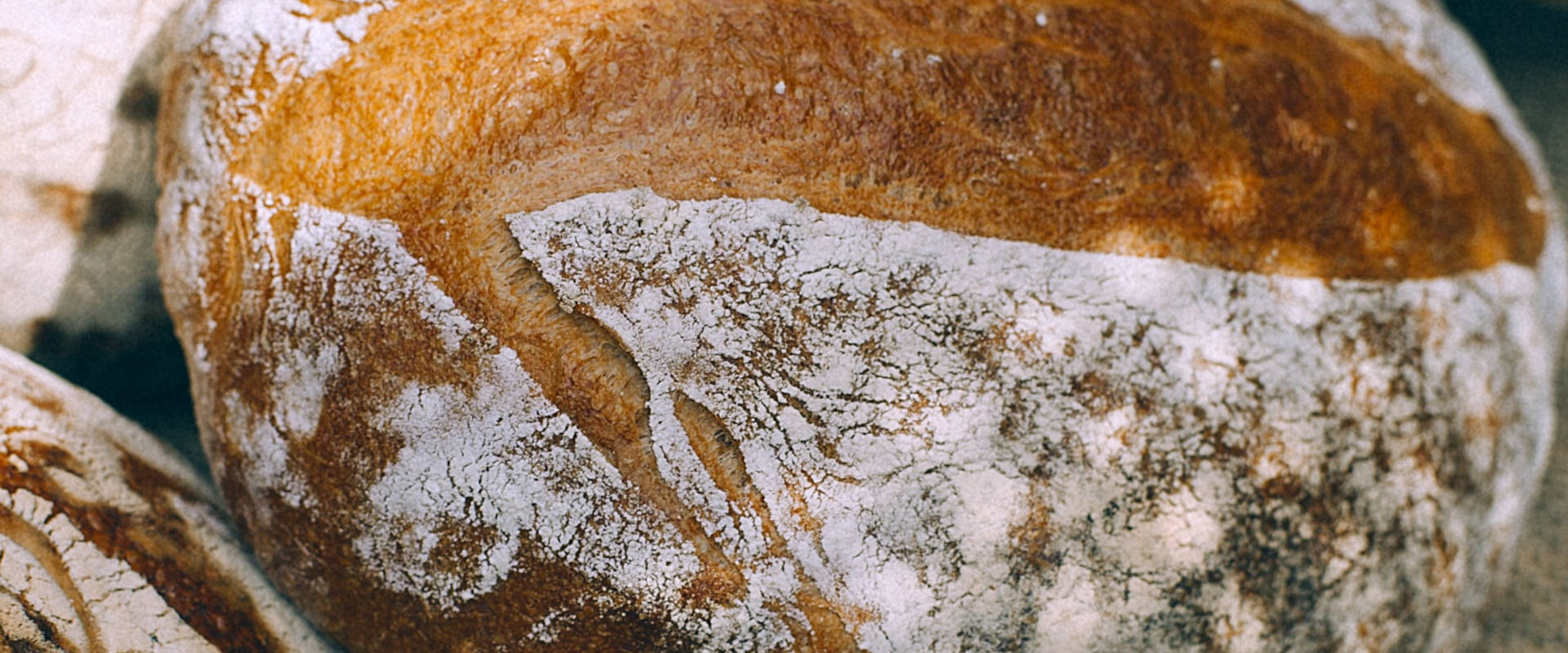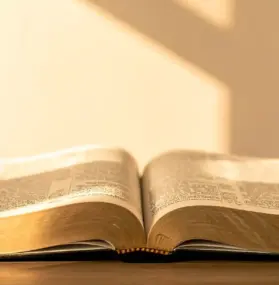- by Carrie Shaw
- on September 2, 2025
(Not a reader? Take a listen instead ⇓)
Jesus looked around the table at the closest of his disciples gathered with him, their faces reflected in the warmth of the candlelight. It was early spring, and the nights were still cool; the disciple whom he loved leaned in a little closer, although as much for affection as for warmth.
The room was filled with the pungent aroma of bitter herbs, the freshly baked scent of Matzah, the rich meaty smell of roasted lamb, and the earthy sweetness of the wine.
They were a diverse and sometimes dissonant group, these disciples that His Father had given him.
Some were initially strangers to each other, and others, as natural-born brothers, knew each other like the back of their hands. They all came to him from very different social backgrounds and held diametrically opposed philosophical and political viewpoints.
Rivalries often broke out between them, and yet, in this largely dissimilar group, they had found unity in him, and in them, Jesus could see the seeds of the church – his church – that was soon to be born. These few represented the expansive and diverse family that God would build through him, for the glory of His name and in pursuit of His purpose.
But the next few days would be very hard on these little sheep of his and they were to be tested like never before.
Jesus had celebrated Passover with his family for as long as he could remember; with his mother, Mary, his adoptive father, Joseph, and his brothers and sisters. Often, other families in their neighbourhood had piled into the single, large, comfortable room of their simple stone-and-mortar home to join them.
He remembers the time that it had been his turn, as the youngest at the table, to ask the Mah Nishtanah – the four questions, each one beginning with “How is this night different from all other nights?”
On all other nights, we eat chameitz and matzah. Why on this night, only matzah?
On all other nights, we eat all vegetables. Why, on this night, maror?
On all other nights, we don’t dip even once. Why on this night do we dip twice?
On all other nights, we eat either sitting upright or reclining. Why on this night do we all recline?
Everything on the table had represented something. Everything eaten with the humble dinnerware had told a story. The asking had then prompted a dramatic retelling of Israel’s liberation from slavery in Egypt many hundreds of years before; a night that was forever etched in Jewish memory, a night of blood and fire, death and deliverance.
The account of their exodus and deliverance had been retold ever since, in song and story, and especially now on this night of the year; so that they might never forget who they were, to whom they belonged, and to whom they owed their freedom.
Gathering now with his disciples to celebrate Passover once again, Jesus understood, as no one else did, the true significance of what was symbolised by this festival and what kind of deliverance God had always had in mind.
Turning to his disciples, his voice warm with feeling, Jesus said “I have earnestly desired to eat this with you before I suffer.”
It was the night before tomorrow and this was to be his last Passover.
The Story Of Redemption
Passover was a festive meal, celebrating Jewish freedom from bondage but it was also a powerful metaphor for a greater story of deliverance that God would one day enact on behalf of the world. It told the important and significant story about Jesus, long before his arrival, and the work that he would come to do on behalf of humanity – the story of redemption.
Jesus now takes this commemorative Passover meal, already 1,500 years old by this time and full of ancient symbology and meaning, and repurposes it in order to institute his ‘new covenant’.
This new covenant would supersede the old and would be a covenant for everyone, not just Jews. In Jesus, all the families of the earth would be blessed and this covenant’s promise would be sure, sealed by the body and blood of Jesus himself.
Known by many different names today (‘the breaking of bread’, ‘the table of the Lord’, ‘communion’, ‘the eucharist’, or ‘the Lord’s supper’), this ‘new covenant’ meal is a sacred reminder of a significant historical event; deliverance and new life through the death and resurrection of Jesus.
Participating together in communion, Christians recount to one another their own stories of deliverance, asking, as it were, “How is this night different from all other nights?” They eat bread and drink wine together, blessing the name of the Lord and celebrating life and resurrection.
There are few things more important or significant for Christians to share together.
Bread, the staple of life, is broken and shared, as Jesus once did for his disciples. In this bread is symbolised urgency, imminent death, and sacrifice; but also unity, commonality, and community.
Wine is poured and passed around; representing new life, joy, blessing, sanctification, and grace, flowing from Jesus’ own life to ours.
When we eat the bread and drink the wine, we recount, one to another, what the Lord has done for us in his death and the new life that is promised to us in his resurrection. We do this, as often as we do this, in remembrance and celebration of him.
“I take the bread of life
Broken for all my sin
Your body crucified
To make me whole again
I will recall the cup
Poured out in sacrifice
To trade this sinner’s end
For Your new covenant
Hallelujah
I’ll live my life in remembrance
Hallelujah
Your promise I won’t forget”
Remembrance | Hillsong Worship
The First Communion
Many Christians no longer regularly celebrate communion. For many churches, communion has become highly ritualised and ceremonial. For some churches, communion has become exclusive, offered only to their own members.
Yet communion is an important part of our Christian life, as members of Jesus’ body and God’s family. It is a key element in our fellowship with one another. It is Jesus’ covenant with each one of us and the price of it was his own blood.
The first communion is, at its core, a deliverance story in which all Christians share. It’s a tale of liberation from darkness and the life that is found in Jesus.
It’s a reminder and a witness that, in Jesus, God is saving, rescuing, atoning, justifying, ruling, and reconciling people for the glory of His name, all in pursuit of His purpose. Sharing the meal of communion powerfully connects each member of Jesus’ church to one another as they acknowledge their commonality in him, who is the life force that unites the church and whose love birthed it into being.
The first communion speaks clearly to us of sacrifice, freedom, belonging, and resurrection. It smells like bitter herbs and warm bread and sounds like singing and the familiar clatter of dinnerware.
It takes place in homes, green spaces, sidewalk cafes and church buildings, hospitals and office spaces, on beaches, and in parks.
Its most defining feature is Jesus and the remembrance of him by those who are his.
It brings real people, diverse and divided in life, into common union together, into relationship, into the sweaty, messy, untidy reality that is the church, not because they are worthy, but because Jesus died for them and that is enough.
It’s significant that Jesus connects the institution of communion – which speaks of his sacrifice and death, motivated by love – with the importance of his followers showing his love by loving one another. At the end of their meal, he gives them a ‘new commandment’, to live by once he is gone:
“A new commandment I give to you, that you love one another: just as I have loved you, you also are to love one another. By this, all people will know that you are my disciples if you have love for one another.” (John 13:34-35)
By loving one another as he has loved them, all the world will know that they are his disciples. The world will see your love for each other and know, without even having to ask, that you are followers of the king.
How we love, as Christians, therefore, is either a powerful witness to the truth and reality of the risen king and our allegiance to him; or a public denial of our belief in the king and his ability to truly transform our hearts.
By not loving as the king loves, we demonstrate for all to see that the ruler of this world still controls us; that we are allowing this rule to flourish in our lives and govern our actions towards others.
Real faith in the king is more than the words we say, the emotions we feel, ideas we debate, or a truth we believe. Real faith is something we do; expressed in visible ways, deeply rooted in and flowing from this focused centre; that “one man died for everyone.”
Celebrating communion is neither an optional nor exclusive event, for some Christians only, but an essential and embracing reality for all Christians; regularly bringing all of God’s family together in celebration.
It’s a powerful reminder of who we are, to whom we belong, and to whom we owe our freedom.






